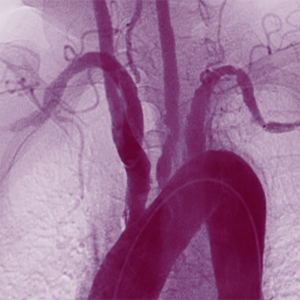Comparison of clinicodemographic characteristics and pattern of vascular involvement in 126 patients with Takayasu arteritis: a report from Iran and Turkey

Submitted: 4 March 2022
Accepted: 11 October 2022
Published: 29 December 2022
Accepted: 11 October 2022
Abstract Views: 742
PDF: 402
Publisher's note
All claims expressed in this article are solely those of the authors and do not necessarily represent those of their affiliated organizations, or those of the publisher, the editors and the reviewers. Any product that may be evaluated in this article or claim that may be made by its manufacturer is not guaranteed or endorsed by the publisher.
All claims expressed in this article are solely those of the authors and do not necessarily represent those of their affiliated organizations, or those of the publisher, the editors and the reviewers. Any product that may be evaluated in this article or claim that may be made by its manufacturer is not guaranteed or endorsed by the publisher.
Similar Articles
- M. Carotti, F. Salaffi, P. Manganelli, L. Salvolini, E. Bichi Secchi, S. De Berardinis, The subclinical involvement of the lung in rheumatoid arthritis: evaluation by high-resolution computed tomography , Reumatismo: Vol. 53 No. 4 (2001)
- F.I. Gorial, N.I. Awadh, N.W. Shaheen, A. Dheyaa, Z.H. Ali, N. Wajdi, Emergence of acute promyelocytic leukemia in a patient with granulomatosis with polyangiitis during treatment with cyclophosphamide: a rare case report , Reumatismo: Vol. 75 No. 4 (2023)
- G. Besutti, C. Marvisi, F. Muratore, L. Spaggiari, The role of sacro-iliac joint magnetic resonance imaging in the diagnosis of axial spondyloarthritis: focus on differential diagnosis in women , Reumatismo: Vol. 76 No. 3 (2024)
- S. Batıbay, R. Koçak Ulucaköy, Z. Günendi, F. Göğüş, The prevalence and clinical spectrum of post-Covid syndrome in patients with rheumatic diseases: a single-center experience , Reumatismo: Vol. 74 No. 1 (2022)
- E. Yılmaz, Can restless legs be a sign of something else? A case report of spondyloarthritis presenting with restless legs syndrome and a review of the literature , Reumatismo: Vol. 75 No. 4 (2023)
- F.M. Mariani, A. Alunno, F. Carubbi, C. Ferri, A rare case of symptomatic creatine kinase elevation in a patient with rheumatoid arthritis treated with baricitinib , Reumatismo: Vol. 76 No. 2 (2024)
- F. La Torre, C. Coppola, M.G. Anelli, F. Cacciapaglia, G. Lopalco, F. Cardinale, F. Iannone, Disease activity assessment for juvenile idiopathic arthritis in transitional care , Reumatismo: Vol. 76 No. 2 (2024)
- G. El Hasbani, J. E Nassar, A.M. Elsayed Ali, I. Uthman, A. Jawad, The impact of nicotine smoking on spondyloarthritis and rheumatoid arthritis , Reumatismo: Vol. 76 No. 2 (2024)
- I. Pantano, D. Mauro, D. Simone, L. Costa, D. Capocotta, M. Raimondo, D. Birra, G. Cuomo, T. D'Errico, M. Ferrucci, F. Comentale, G. Italiano, P. Moscato, N. Pappone, R. Russo, S. Scarpato, R. Tirri, P. Buono, A. Postiglione, R. Guida, R. Scarpa, U. Trama, E. Tirri, F. Ciccia, The data project: a shared approach between stakeholders of the healthcare system in definition of a therapeutic algorithm for inflammatory arthritis , Reumatismo: Vol. 74 No. 4 (2022)
- D. Oliveira, A. Martins, F. Martins, C. Gomes, S. Pimenta, C. Vaz, L. Costa, M. Bernardes, Systemic lupus erythematosus induced by anti-tumor necrosis factor α therapy in inflammatory rheumatic diseases: a case series , Reumatismo: Early Access
<< < 33 34 35 36 37 38 39 40 41 42 > >>
You may also start an advanced similarity search for this article.

 https://doi.org/10.4081/reumatismo.2022.1487
https://doi.org/10.4081/reumatismo.2022.1487





